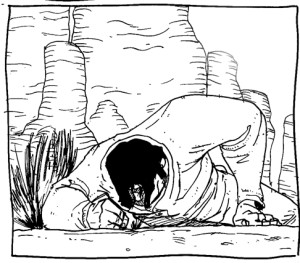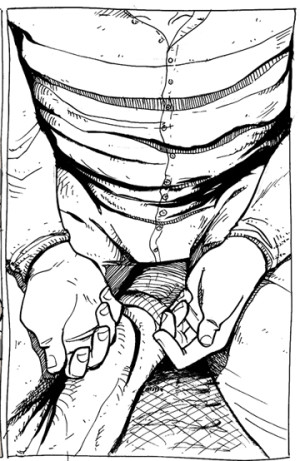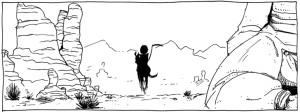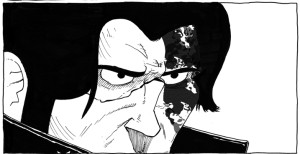Behind Every Line and Between Every Panel
Comics are an inherently overlooked medium. I don’t necessarily mean that in the sense of cultural appreciation––we have the multi-billion dollar Marvel cinematic universe to prove that isn’t true––I mean as a reader reading comics. Being overlooked is the point, however. A thoughtfully crafted page layout naturally guides the eye from one panel to the next, causing your brain to not even notice that the images are static and, perhaps, nonsensical when taken out of context. Comics rely on the fact that a reader’s brain fills in the gaps between the panels––formally called gutters––with action and camera moves so that the next panel does make sense. Part of that trick is to give the reader just enough information to get the gist and keep moving. As you can guess, the artist can easily manipulate this to either slow down or speed up a reader, depending on what the story (or creator) demands.
As quickly as it takes to read a comic, the amount of work that goes into creating not only a book, not only a page, but a panel is painstaking (though, panel composition also involves a lot of instinct, too). Think of it this way: in a movie, a filmmaker gets twenty-four frames per second to show the viewer a single shot. Not to be patronizing, but that is, again, twenty-four still images in a single second of on-screen time. That’s 1,440 still images per minute of film. Furthermore, a shot in a movie can last a few seconds to a minute or two (or five or ten), which means thousands of still images could come together to show movement and progression of character and story. A panel is pretty much (with exceptions, of course) the equivalent of a single shot in a film. Again, not to patronize, but a panel is a single drawing.
What a comic artist has to do is pick the one image from the entire range of possibilities––a range that would normally be shown in film––and pick the exactly right one to do the same thing as an entire shot. Of course, this isn’t a perfect science, but no matter the level of care or artistry, it is a thoughtful one. No matter what, a comicker has to boil every panel down to a moment––one that best suits the goals of that panel as well as serves the needs of the page and also serves the needs of the book. It’s a scary business if you think about it like that and expanding it to a page––trying to capture that perfect image between three and six times per page, sometimes more. But most readers soar over panels, linking the actions and stories between them naturally and easily so that they see a fully fleshed out movie in their heads, full of foley, dialogue, and background music.
Many comics readers are also artistically inclined and, in the age of easy and cheap internet access, it’s not uncommon for those people to try and make their own comics. I think, however, that it’s this burden of a panel that stops many amateur or independent comics from finishing. Some seem to stop right after they start because of the realization that each panel can’t just look cool. Panels mean so much more than that; they involve much more thought than that. Every artist, I believe, hits that wall when they realize that drawing a single panel is very hard work for something that they know and depend that the reader breeze right over. If the average reader doesn’t take in a panel with a single glance, understand it, and move on, then it’s likely you’re doing it wrong, and that’s scary to accept.
I am, by no means, a professional comicker (I may not even be a good one), though I am a thoughtful one. However, even that doesn’t mean I cheat when drawing a panel or get lazy every now and then and cook up a pose or angle I know will work or is simply easy to draw. Most importantly, I know I’m still learning. For some reason, I’ve decided to share that learning curve and its process with the world as my webcomic, Long John, hits the world-wide web.
I have some confidence already––having gone through a lot of public growing pains for the six years I co-wrote and drew Eben07––but this time Long John is all me, standing up creatively for myself for the first time ever. It’s a powerful moment, even if it ends up being a total disaster (which it won’t be––at worst it’ll be read by few readers: me and my mom). Before this, I only created in partnerships with other talented friends. But partnerships are ultimately temporary things as people grow and goals for creativity and life change. Through all that, I’ve studied and learned through all the ups and downs, searching for the right moment to become the artist I want to be. And that starts with Long John for all its strengths and flaws (of which it will have many).
However it may look, I’m not begging for readers or looking for sympathy because I think too hard about making comics or am having actualizing breakthroughs in my creative life. All I want, with hope, is that you’ll just read each update and ask, “Where’s the next one?”––overlooking the fear, sweat, thought, and intention behind every line and between every panel. Because that’s how comics are supposed to be.





Discussion ¬